
Switzerland - Métro of Lausanne
For a full scale picture, please click on the picture shown !
Métro-Ouchy
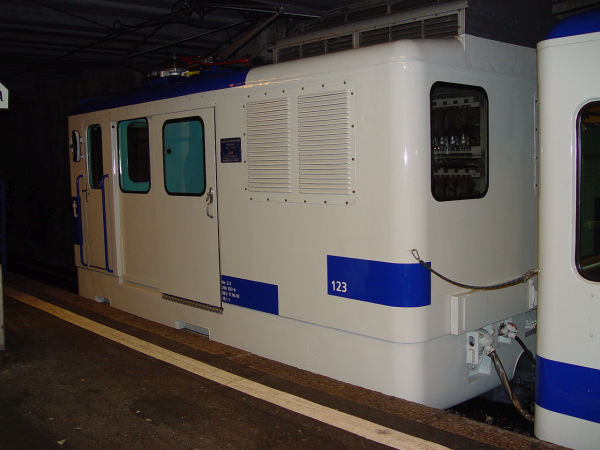
The city of Lausanne is built on a very steep hillside from the shores of Lake Geneva (Lac Leman). The origin of the first line of
Metro of Lausanne was a funicular, opened in 1877. It ran from Ouchy by the lakeside up via the main railway station to Flon, 106 metres higher
up on the hillside. Length of the line was 1482 metres. As the city grew, a simple funicular was not enough any more as more capacity was needed.
In 1954-58 the funicular was converted into a rack-rail light railway, which then got the name Métro-Ouchy. The line was by then operated by
three trains. Each had a class He 2/2 locomotive, always positioned at the downhill side and then two unmotorised coaches.
This is one of the three He 2/2 rack-rail locomotives of the Métro-Ouchy line. This picture is from the main railway station, Gare CFF.
These locomotives were 6,25 metres long, weighed 18,1 tons and had a top speed of 32 km/h. They were built in 1958 by the Swiss Lokomotivfabrik
Winterthur with electrical components from Maschienenfabrik Oerlikon.
Picture from Gare CFF of Lausanne 23.1.2003 by Ilkka Siissalo.
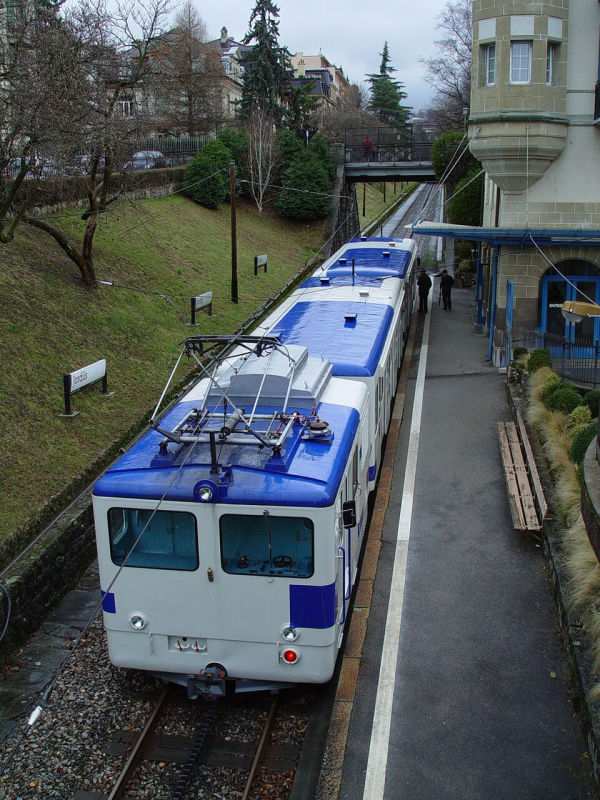
This picture shows the whole train of the Métro-Ouchy line: a small rack-rail locomotive of the class He 2/2 and two coaches, locomotive always
on the downhill side.
This picture is from the Jordils station located between Ouchy down by the lake and main train station higher up on the hillside.
Picture was taken by Ilkka Siissalo 22.1.2003.

A closer look of the He 2/2 locomotive
Picture was taken by Ilkka Siissalo from a walking bridge passing over the line at Jordils station 22.1.2003.
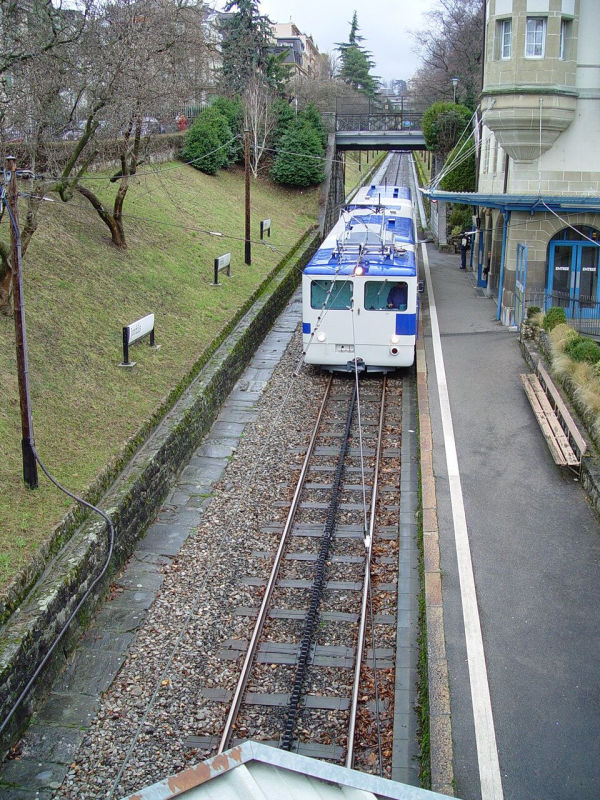
A second train is approaching the Jordils station, this time running downhill.
Picture by Ilkka Siissalo from a walking bridge passing over the line at Jordils station 22.1.2003.
Gare CFF - Flon line, "Metro-Gare"
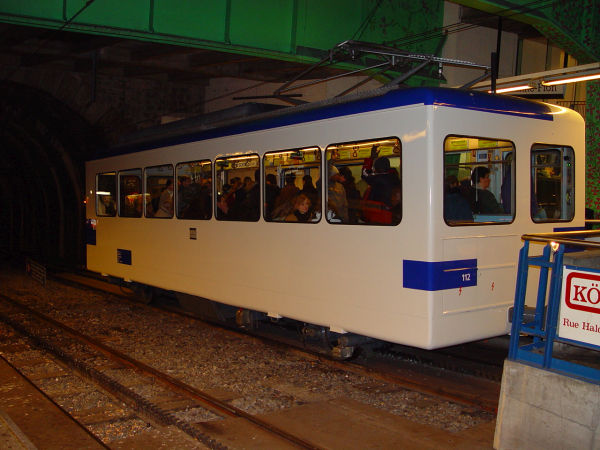
As explained above, the Metro-Ouchy line was originally a funicular and the line was opened in 1877. It became
immediately clear that there will always be such a huge number of passengers between the two stations Flon and
the Gare CFF that the capacity of just the one long funicular will never be enough. A second funicular was built side by side
with the first one just between the stations of Flon and the main station, Gare CFF. Also this funicular was rebuilt into
a rack-rail railway 1954-58. This second line called Metro-Gare was operated by a single rack-rail electric motor wagon
of the type Beh2/2. This line was only 318 metres long, rising uphill 37 metres. Basically it was just like a lift
with a high capacity. There were two of these electric rack-rail motor wagons, numbered 101 and 102. In 1975 these motor
wagons were replaced by 2 newer ones with a bigger capacity built by SIG-Oerlikon and numbered 111-112.
This is the motor wagon 112 from 1975.
Picture from the station of Lausanne-Flon 23.1.2003 by Ilkka Siissalo.
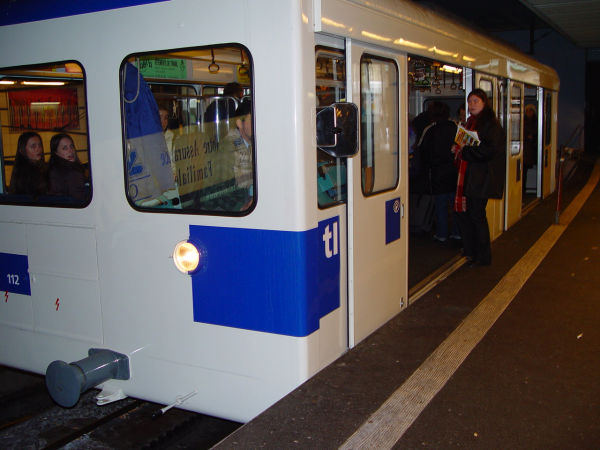
These motor wagons 111 and 112 were just like lifts. They needed really large doors to facilitate quick movement of huge crowds
of passengers in and out.
Picture from Lausanne-Flon 23.1.2003 by Ilkka Siissalo.
The present day M2 Metro
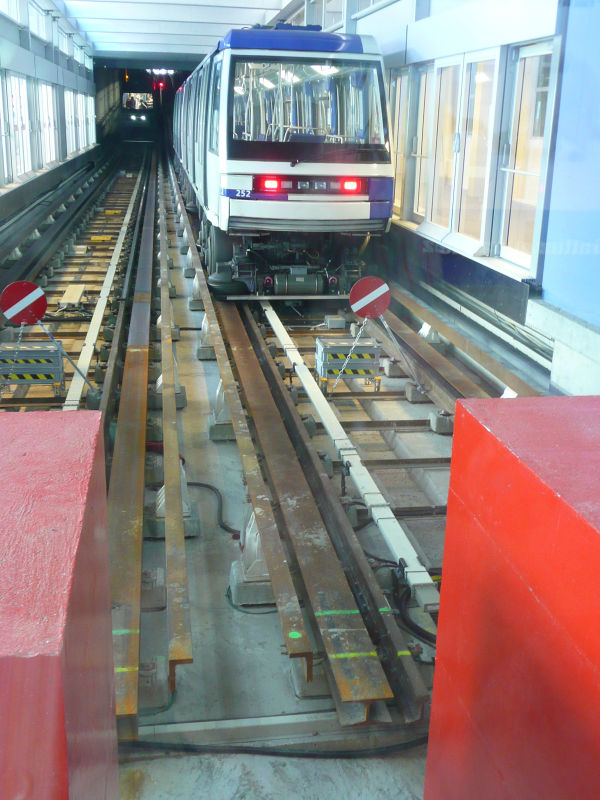
During the years 2004-2008 the whole metro system was closed. Rack-rail systems were removed. The present day M2 métro is built
using the same technologies as in the most modern parts of the Paris metro system. Trains are fully automatic and they run on rubber wheels.
The line was also lengthened and runs now from Ouchy down by the lake up to Croisettes. There are now 15 two-coach trains based on the
Paris metro type MP89 built by Alstom in France. Each train can take 222 passengers. 62 have seats.
This is a public domain picture from the station of Ouchy published at Wikimedia Commons by the user "spsmiler" at 2.9.2009.
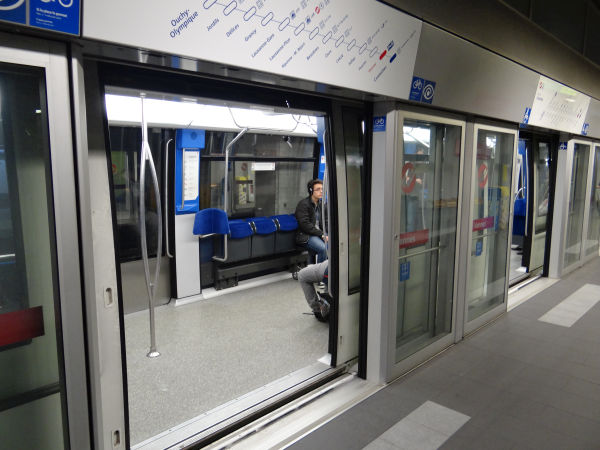
One of the fully automatic new rubber tyre metro trains stopping at the automatic station of Vennes, far uphill from the city centre.
Picture from Vennes 4.5.2016 by Ilkka Siissalo.
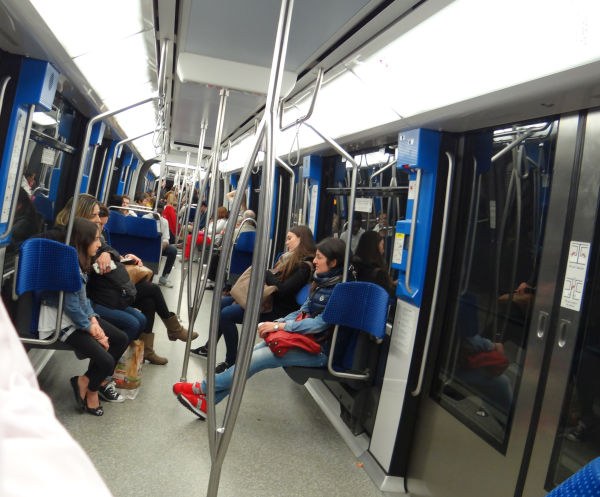
Inside view of one of the automatic rubber tyre metro trains.
Picture from near the station of Vennes 4.5.2016 by Ilkka Siissalo.
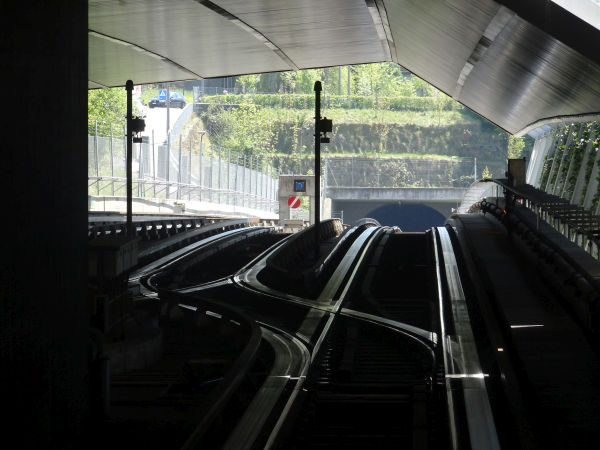
Automatic switches of the rubber tyre metro system.
Picture 4.5.2016 by Ilkka Siissalo.

In the city centre the automatic metro runs mostly underground, but at many places also on long bridges,
like here close to the Gare CFF station.
Picture 4.5.2016 by Ilkka Siissalo.
Lausanne Métro Line M1
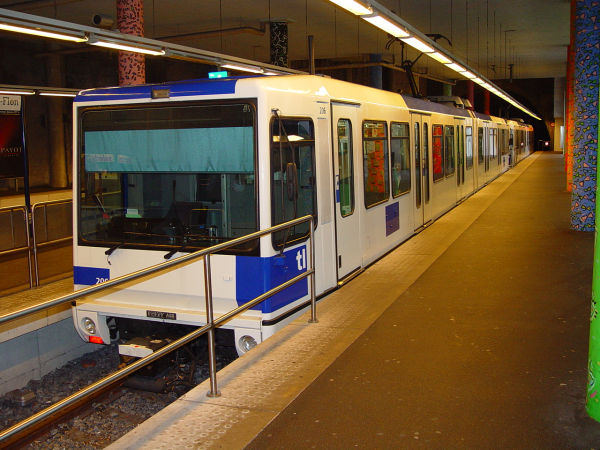
The Lausanne métro line M1 is not really a metro at all, but a light rail train. It runs from Flon station at the city centre
towards the west via the university campus to Renens, a bit less than 8 km. It's mostly a single-track line, with possibilities
for the trains to pass each other at several stations. The trains called LRV (=light-rail vehicle) were built by Vevey and ABB.
18 of these two-coach trains were initially built. Here we see one of them before its mid-life rehaul.
The picture is from Lausanne-Flon 23.1.2003 by Ilkka Siissalo.
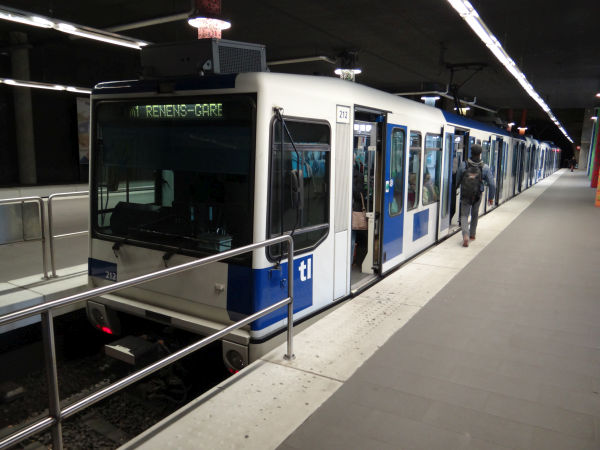
A similar M1 line train after its thorough mid-life rehaul. The most obvious difference is now a large airconditioner on top of
the roof of the driver's cab, but also doors and chairs were replaced. At the same time five new similar trains were built by the
maintenance yards of the train company MOB, so that there are now enough train units to run every five minutes with a two-unit composition.
Picture from Lausanne-Flon 4.5.2016 by Ilkka Siissalo.
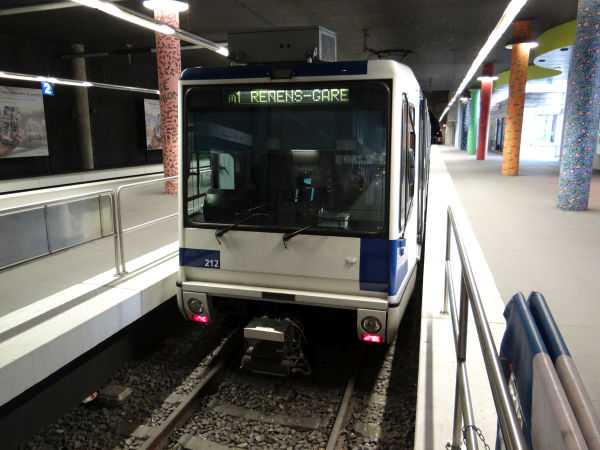
A closer look of the front of a modernised M1 train.
Picture from Lausanne-Flon 4.5.2016 by Ilkka Siissalo.
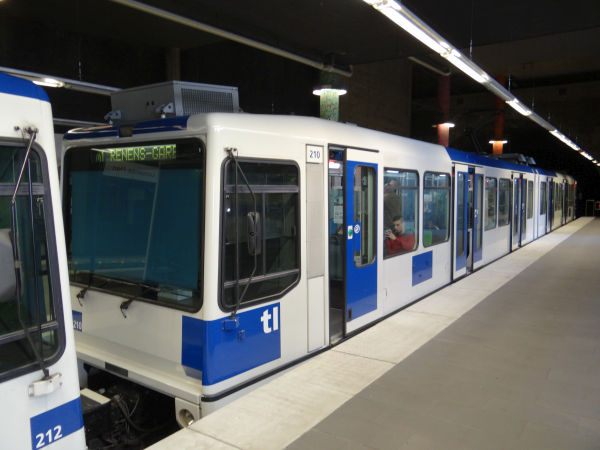
Automatic doors are closing, the train is ready to leave.
Picture from Lausanne-Flon 4.5.2016 by Ilkka Siissalo.

